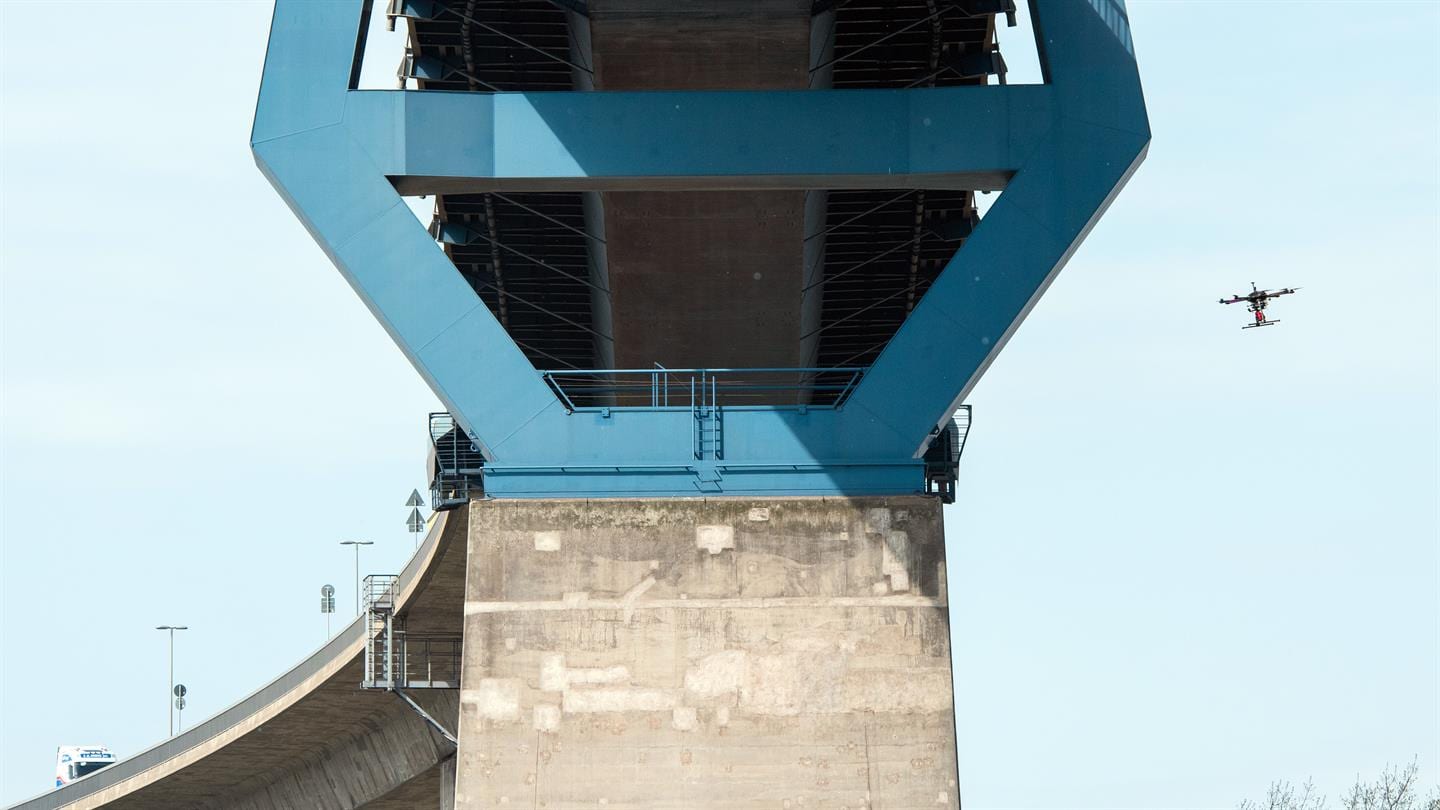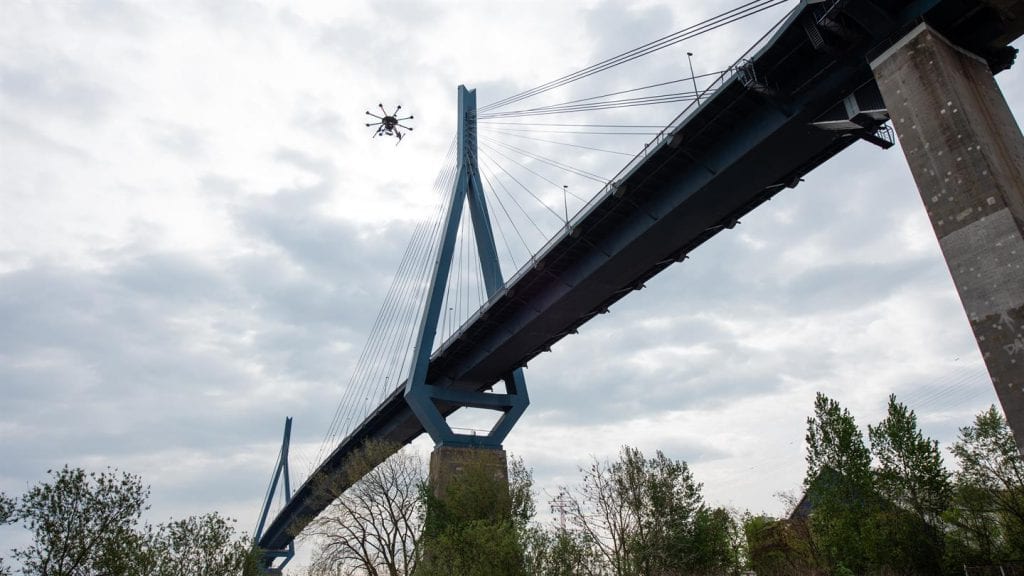News
Hamburg Investigates Interaction and Control of Drones in Urban Airspace
Aiming to provide a test scenario for the future use of drones in urban airspace researchers from the German Aerospace Center (Deutsches Zentrum für Luft- und Raumfahrt; DLR) and industrial and academic partners jointly conducted the City Air Traffic Management (City-ATM) project and were able to successfully test an air traffic management system which coordinated the flight of two drones around the Köhlbrand Bridge in Hamburg last month.
The project demonstrated two drones flying simultaneously and cooperating with one another flying along pre-set routes to the side of and underneath the Köhlbrand Bridge, amid active shipping and road traffic, while inspecting it for cracks during the flight test conducted in April.
The project’s leader Stefan Kern, from the DLR Institute of Flight Guidance, said, “Under highly realistic conditions we demonstrated how two camera drones can work in parallel – from flight planning to detection and identification, through to flight monitoring and conflict detection and avoidance. The use case of a bridge flight provided an ideal test scenario, as it required the drones to work together particularly closely and in a very dynamic way.”
.@DLR_de and partners conducted flight tests in #Hamburg – demonstrating dynamic collaboration between #Drones as part of the City-ATM project, which investigates the interaction and control of drones in urban airspace pic.twitter.com/xUnaVqyiuw
— DLR – English (@DLR_en) May 15, 2019
These drones equipped with telemetry and communications technology to enable the determination of their location and status were provided by the DLR institutes of Flight Guidance, Flight Systems and Communications and Navigation. The equipment facilitated the sharing of information between the drones and the control station.
An integrated air situation display using drone locations tracking was conducted by Deutsche Flugsicherung (DFS), the company responsible for air traffic control in Germany. This continuous transmission of the drones’ locations gave the pilots at the control station a picture of the situation in the air, including any conflicts. The U-Fly ground control station for drones, belonging to the Institute of Flight Guidance, was used for the test flights.
The system developed for City-ATM involves several steps.
- First, the pilots and drones are electronically registered for take-off clearance and authenticated; the flight missions planned, considering the spatial flight restrictions (geofences) involved.
- Accordingly flightpaths were generated taking into account the flight performance of the equipment, as well as local conditions and time constraints.
- These steps of preparation allowed for identification of potential conflicts before take-off. It is particularly important that drone flights covering large distances and flying beyond the line of sight of controlling pilots be able to detect and avoid other airspace users at an early stage.
The City-ATM system will be tested for other use cases until late 2020. The researchers will also investigate areas such as the optimal use of drones for rescue workers.
The flight testing was carried out in partnership with the Hamburg Port Authority (HPA) and the project partners NXP, KopterKraft OÜCity Air Traffic Management, FlyNex, DFS Deutsche Flugsicherung GmbH, and the Center of Applied Aeronautical Research (Zentrum für Angewandte Luftfahrtforschung GmbH; ZAL).























